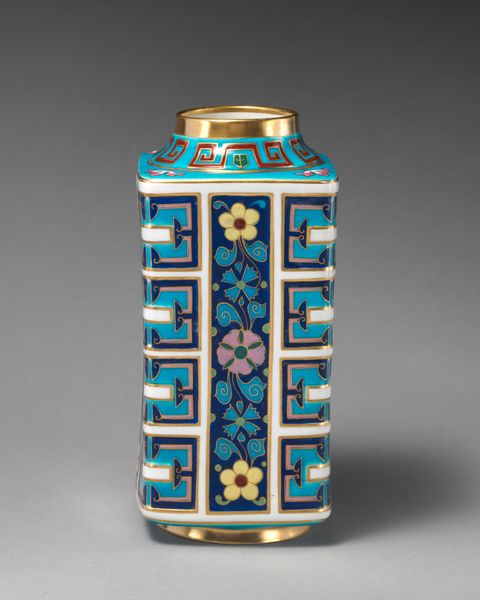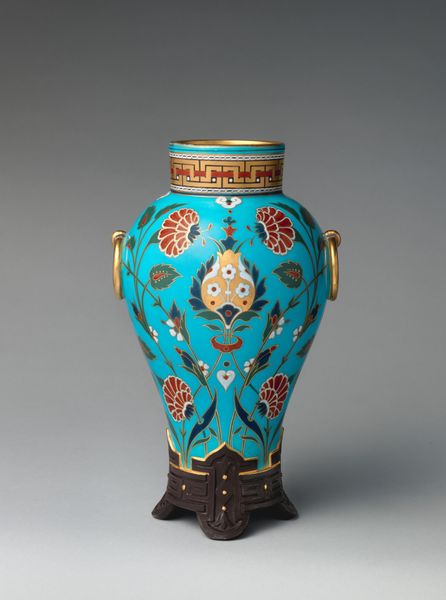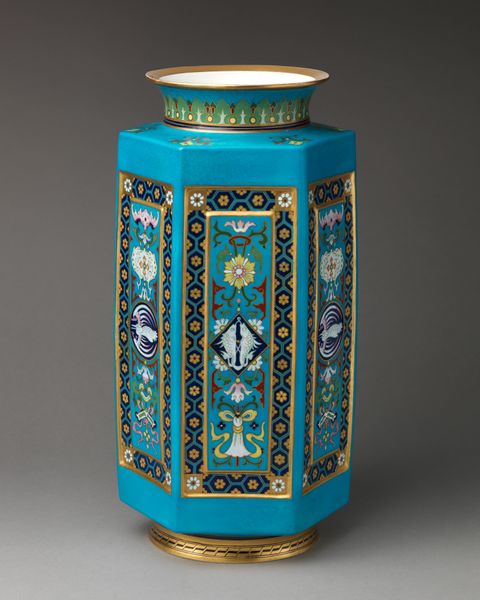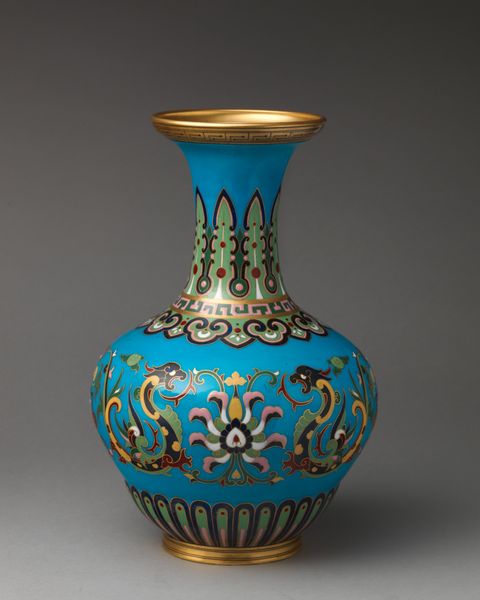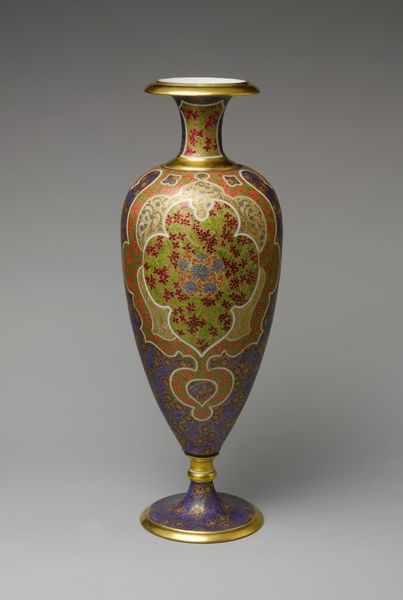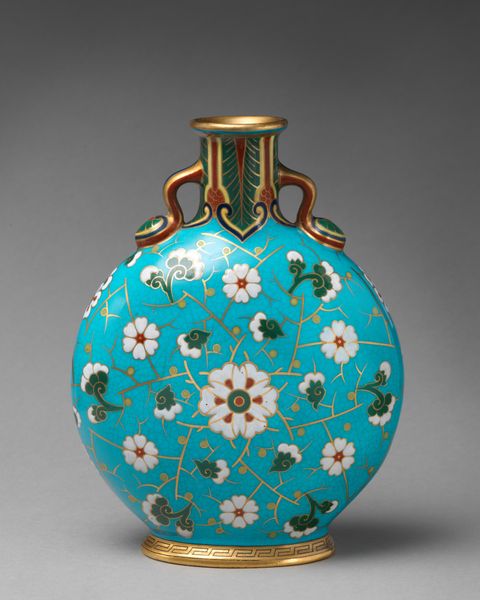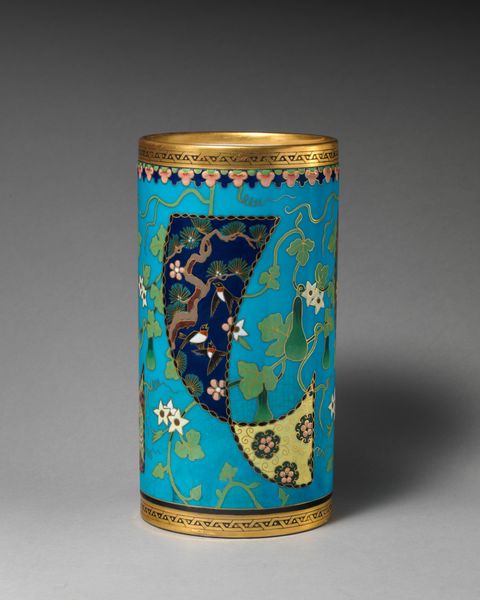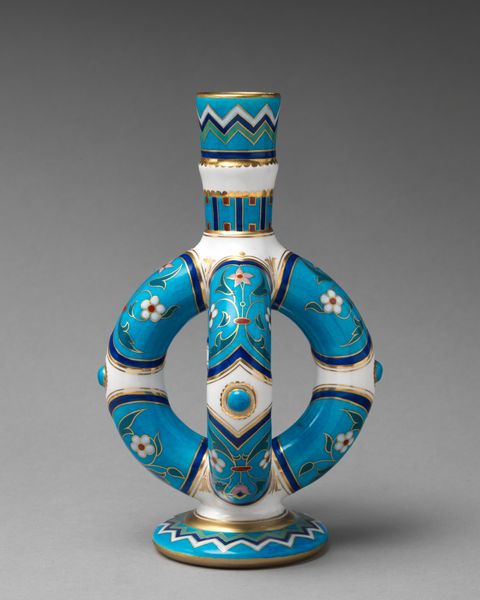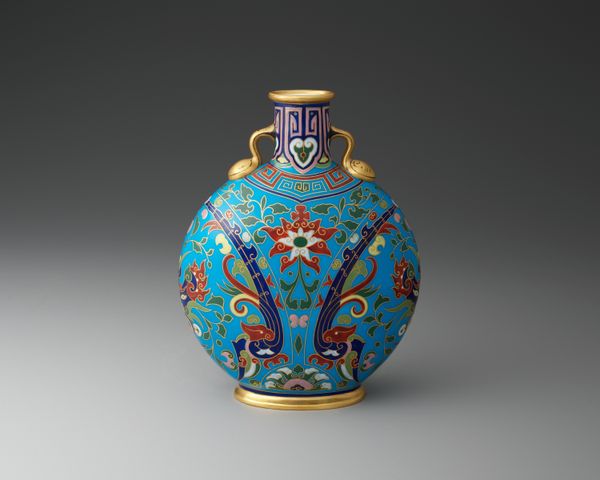
ceramic, porcelain, sculpture
#
ceramic
#
porcelain
#
sculpture
#
orientalism
#
decorative-art
Dimensions: confimred: 7 9/16 × 4 11/16 × 4 5/8 in., 1.4 lb. (19.2 × 11.9 × 11.7 cm, 650g)
Copyright: Public Domain
Curator: This striking piece is a porcelain vase with owl heads and cloisonné decoration, created by Minton(s) in 1868. You can find it at the Metropolitan Museum of Art. Editor: It's such a captivating object. The first thing that strikes me is that vibrant turquoise! It contrasts so beautifully with the gold trim and those surprisingly lifelike owl faces. Curator: Minton was really tapping into the Japonisme craze that swept Europe during that period. You see it in the stylized floral motifs and geometric patterns mimicking Japanese cloisonné. Editor: It feels very much like a high-end collectible meant to sit within an equally stylish interior, a deliberate exhibition of taste and wealth of the Victorian period. Did it meet the manufacturing and aesthetic standards of the Arts and Crafts Movement? Curator: Interesting question! The degree of mechanization involved would be something to consider. Mass production and consumerism were already transforming artistic creation. The materials, like porcelain, were also globally sourced. Editor: Yes, it's clear that the porcelain isn't merely a neutral surface. Its smooth, manufactured quality seems fundamental to the overall impact of this decorative art object. Those delicate porcelain owls appear frozen in stylized form but are individually molded as appliques to the vase form. Curator: And there is this fusion of Eastern-inspired design with Western manufacturing prowess that underscores so many art objects of the era. We are drawn to its surface beauty. The context of this artwork and its making reveal larger patterns. Editor: Right, it becomes about not just what is depicted, but how it’s made and by whom. This kind of cross-cultural aesthetic reflects a specific socio-economic context, which allows us to reflect upon how museums, galleries, and socio-political forces shape the production and reception of art Curator: Examining its composition of industrial ceramic and cloisonné, together with those precious materials, opens up all sorts of dialogues about Victorian society. Editor: Precisely! And it prompts a reconsideration of categories - how “decorative art” fits into a larger historical and political landscape.
Comments
No comments
Be the first to comment and join the conversation on the ultimate creative platform.
